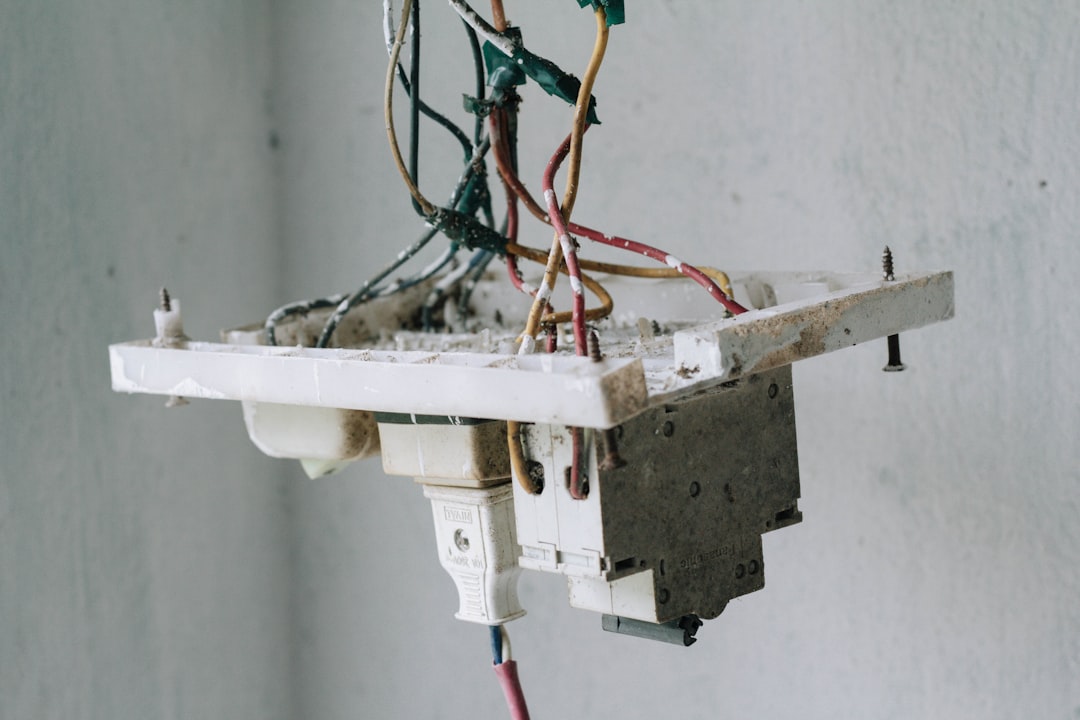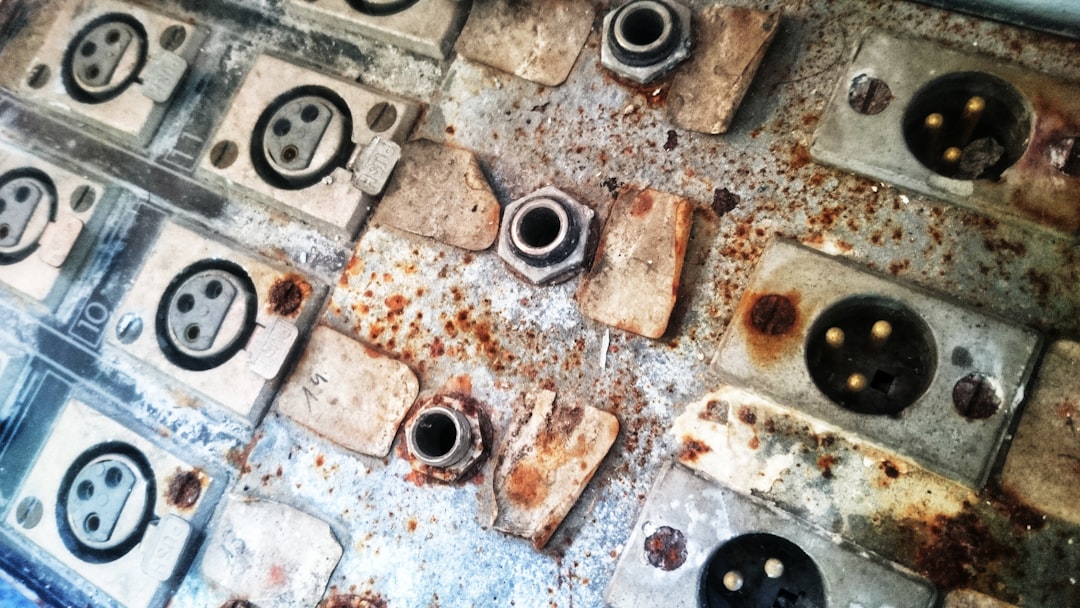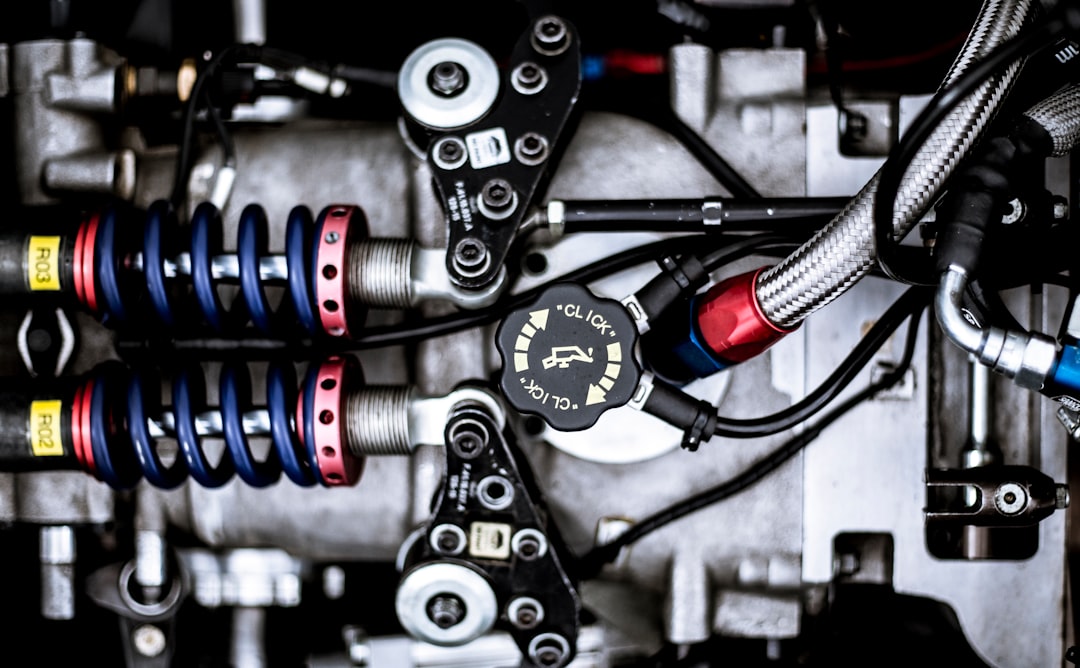

Engage prospects with a scan and streamline customer engagement with FREE QR code marketing tools by Sona – no strings attached!
Create a Free QR CodeFree consultation

No commitment

Engage prospects with a scan and streamline customer engagement with FREE QR code marketing tools by Sona – no strings attached!
Create a Free QR CodeFree consultation

No commitment
The world of condenser repair services is being reshaped by rapid digital transformation, as businesses seek to connect their offline expertise with customers’ online habits. From HVAC system diagnostics to routine maintenance and repair scheduling, companies must bridge the gap between in-person service calls and digital convenience. Traditional workflows like paper service tickets, printed manuals, and phone-based appointment bookings are slow, error-prone, and create friction for busy property managers and homeowners who increasingly expect instant, seamless digital options.
For leaders in condenser repair services, QR codes offer a seamless onramp to efficiency and engagement at a time when missed or misplaced forms frequently result in lost business, and anonymous site visitors represent untapped opportunities. A simple scan lets customers request HVAC maintenance, access troubleshooting guides, or review warranty documentation, all without cumbersome paperwork or unnecessary delays. When manual processes leave high-value prospects untracked and demo interest goes unconverted, modern solutions like QR-powered workflows surface these hidden leads and automate follow-ups to recapture engagement. For HVAC-specific tactics, see Sona QR’s HVAC marketing strategies.
By leveraging QR technology, condenser repair providers can replace outdated processes, reveal previously anonymous customer touchpoints, and offer faster solutions that meet the evolving expectations of modern clients, while capturing the actionable data needed to personalize follow-ups, prevent churn, and scale their business with greater precision.

In condenser repair services, companies often lose track of high-value prospects or delay responses because traditional systems lack immediacy and visibility. QR codes empower providers to turn every field interaction into a data-rich, digital engagement that starts with a single scan and flows into a guided experience: booking, diagnostics, documentation, and follow-up. When implemented well, QR workflows replace paper-based bottlenecks, make every touchpoint measurable, and accelerate revenue.
Start by identifying the analog processes creating friction. Printed troubleshooting guides can be replaced with dynamic QR codes on equipment labels that link to current checklists and videos. Paper service tickets can be digitized with QR-triggered forms, so technicians and customers capture the same data in real time. Phone-only booking can be augmented with scan-to-schedule flows placed on invoices, vehicles, and direct mail. The result is less manual work and faster resolution in both emergency and planned maintenance scenarios.
Modern platforms like Sona QR automate code generation, intent tagging, and CRM integration. This closes workflow gaps and makes it easier to track, follow up with, and convert every potential lead, from cold inquiries to returning clients. By consistently connecting offline interactions to online experiences, teams create a predictable, measurable funnel that aligns with customer needs and operational goals.

Condenser repair providers frequently struggle to connect in-field activity with digital workflows, which leads to missed signals from customers who remain invisible in traditional systems. QR codes transform passive materials into interactive gateways, providing instant access and measurable engagement. They reduce friction for time-strapped property managers and homeowners while giving operators the data they need to prioritize and personalize service.
Several persistent challenges underscore the need for modern approaches. Printed brochures, vinyl service stickers, and paper invoices rarely capture intent. Even when a customer wants to schedule service or explore a maintenance plan, the moment often passes if the next step requires a phone call later or a complex website search. QR codes turn that moment of interest into action by routing scanners to tailored destinations such as emergency repair forms or maintenance checklists.
By reducing the frequency of missed, anonymous, or incomplete leads, QR workflows help companies reclaim opportunities with immediate, personalized follow-ups. The approach also aligns with rising expectations for digital convenience and creates a shared data layer for operations, sales, and marketing teams to use when making decisions.
Condenser repair workflows often break down when customers try to engage through channels that cannot capture intent or personalize content. Strategic QR code formats and destinations close these gaps. Choose a format based on the action you want customers to take and the context in which they are scanning.
For most service-oriented teams, dynamic QR codes are preferred because they support tracking and can be updated after printing. Static codes still have a role for fixed destinations like evergreen safety guides or compliance PDFs. Use a mix that balances flexibility with simplicity and map each format to an outcome.
With Sona QR, you can generate and manage all these formats in one place, apply branding, and capture scan analytics for optimization. Start by matching each format to a single desired action and ensure that action is obvious in the call to action and on the destination page.

Offline interactions are full of unstructured signals in condenser repair services. Prospects read a flyer and vanish. A homeowner takes a business card but never follows up. A property manager intends to schedule preventive maintenance but gets pulled into a tenant emergency before making the call. QR placement bridges these gaps by turning every surface into a gateway for instant booking, documentation, or follow-up.
Prioritize placements with the highest intent and the greatest volume of interactions. The best opportunities are often hiding in plain sight on your trucks, equipment, invoices, and at job sites. Pair each placement with a tailored destination that matches the likely need at that moment.
Start with two or three high-visibility placements and iterate. Use scan analytics to learn which CTAs, designs, and destinations resonate in each context. Expand to additional placements once your first deployments are driving consistent outcomes.

Effective QR programs align specific moments of need with precise digital experiences. For condenser repair operators, three use cases consistently deliver impact when paired with the right placements and workflows. Design each use case with a single primary action, a clear CTA, and a short, mobile-friendly destination.
First, resolve concerns about legitimacy and safety while reducing check-in friction. Technicians can display badges with scannable QR codes that confirm credentials, show recent safety training completion, and log site entries. Property managers appreciate fast validation and digital time-stamping; operators capture visit-level data that supports billing and quality assurance. For event and onsite identification, see Sona QR badges.
Second, standardize preventive maintenance and troubleshooting. QR codes on equipment labels can direct users to digital checklists, embedded videos, and context-aware guides based on unit type. Technicians work from the same playbook, and homeowners can self-diagnose minor issues before calling in a visit. This dramatically reduces reliance on paper logs that never reach a CRM.
Third, capture voice-of-customer feedback while registering warranties. Post-repair receipts and follow-up emails can include QR codes leading to warranty registration, review requests, and referral programs. Streamlined claims and proactive follow-ups help retain satisfied customers and generate referrals while surfacing at-risk accounts that require outreach. Consider driving reviews with this Sona QR Google reviews guide.
Treat these use cases as building blocks. As you demonstrate value in one area, layer on advanced elements such as parts availability lookups, scan-triggered video support, or loyalty credits for maintenance plan renewals.
Each QR scan captures a moment of intent along with rich context: where the scan happened, which asset prompted it, and what the person chose to do next. By deploying multiple QR codes across touchpoints, you can automatically segment your audience and feed personalized follow-up campaigns that reflect real behavior, not assumptions.
For condenser repair services, distinctions like emergency versus preventive maintenance are crucial. A person who scans a vehicle decal for a late-night leak needs rapid dispatch options. A property manager who scans a maintenance checklist on a rooftop unit is a candidate for a quarterly service plan. Capture these signals and route them to the right messages, channels, and offers.
With Sona QR, each code becomes a smart entry point into your funnel. Intent tags and routing rules help you nurture scanners through email, SMS, and retargeting ads. Over time, use scan patterns and outcomes to refine your audience logic, focusing on the signals that consistently lead to booked jobs and long-term service agreements.
QR codes unify offline materials with your digital marketing engine. In condenser repair services, this creates continuity across brochures, vehicles, invoices, direct mail, and community events, where most interest starts but rarely gets measured. The goal is a connected funnel where each scan generates data, triggers follow-up, and advances the buyer journey.
Start by reviewing your current marketing channels and identifying where friction or anonymity undermines performance. Printed collateral and trucks are obvious starting points; they are nearly impossible to measure without QR. Add QR codes to bridge these gaps, and use a single platform to manage codes and unify analytics, so every scan contributes to a clear picture of performance.
Use a centralized solution such as Sona QR to manage all codes, apply consistent branding, and sync scan data with your CRM and ad platforms. The result is a multi-channel program where offline spend fuels measurable digital actions and long-term customer relationships.
Start by identifying a specific friction point or revenue opportunity. Examples include abandoned warranty forms, missed demo follow-ups, or low uptake on maintenance plans after repairs. Tie your choice to a measurable goal such as increasing booked repairs, accelerating claims submission, or improving review volume.
Select the code type that fits your need for flexibility, tracking, and security. Static codes are best for fixed destinations that will never change. Dynamic codes are ideal when you need editability, analytics, and segmentation.
Good design boosts scan rates and conversion. Add your logo, brand colors, and a clear frame around the code. Place a concise CTA within two inches of the code that tells people exactly what they will get after scanning. For layout and messaging tips, review Sona QR’s QR codes in marketing.
Roll out codes in the places with the most missed or anonymous engagement. In condenser repair services, top placements usually include condenser units, invoices and receipts, fleet vehicles, job-site yard signs, and seasonal direct mail.
Measurement converts a static interaction into a living source of insights. Collect scan data, monitor conversion behavior, and refine your placements, CTAs, and destinations. Tie scans to revenue outcomes when possible.

A recurring challenge in condenser repair is knowing which interactions drive real business impact. Without attribution, you cannot distinguish between materials that generate booked jobs and those that merely create awareness. For modeling tradeoffs and reporting, see Sona’s blog post single vs multi-touch attribution models.
Tracking should capture both the scan and the downstream actions. Measure not just how many people scanned, but how many scheduled appointments, registered warranties, or requested estimates. Tie scans to revenue events like contract sign-ups, service plan renewals, or replacement equipment sales to establish clear ROI. This level of visibility informs resource allocation, pricing, staffing, and promotional strategy.
With Sona QR and Sona.com, you can capture detailed scan data, sync it with your CRM, and run multi-touch attribution across the journey. Sona links QR scans to website visits, email engagement, and sales activity to reveal how offline moments contribute to pipeline and closed revenue. This turns QR from a convenience feature into a core piece of your performance marketing stack.
QR codes deliver the greatest value when deployed intentionally and connected to automation. Focus on clarity, context, and follow-through. Keep CTAs direct, reduce steps after the scan, and ensure every journey ends with a crisp next action such as Book now, Register warranty, or Request estimate.
Training matters. Technicians should know how to present QR-enabled benefits during service calls and walk customers through the scan when appropriate. A quick on-site demo can turn a passive code into a captured lead or a five-star review. Pair this with marketing automation so that every scan triggers useful communications, not just a thank-you page.
QR codes empower condenser repair services to modernize operations, reduce workflow friction, and deliver measurable business impact. By integrating QR-based processes at every touchpoint, from maintenance checklists to troubleshooting resources and automated follow-up, providers can turn pain points like missed leads, unknown engagement, and incomplete account data into actionable insights. With a platform like Sona QR, you can generate and track your first codes quickly, unify analytics, and connect scans to revenue outcomes so every scan moves your business forward. Start creating QR codes for free.
QR codes have revolutionized condenser repair services by transforming traditional service delivery into seamless, interactive experiences. Whether it’s enabling instant access to repair manuals, scheduling maintenance, or providing real-time troubleshooting support, QR codes eliminate delays and enhance customer satisfaction while streamlining technician workflows. Imagine clients scanning a code to instantly access customized repair guides or warranty information right when they need it most.
With Sona QR, you can effortlessly create dynamic, trackable QR codes that update on the fly—no reprinting required. This means every scan becomes a measurable interaction, helping you optimize customer acquisition, improve service efficiency, and deepen engagement. Connect each scan to actionable insights and unlock new revenue opportunities in your condenser repair business.
Start for free with Sona QR today and turn every QR code into a powerful tool for growth, efficiency, and exceptional customer experiences.
To repair a condenser, technicians use digital tools like QR codes on equipment labels to access updated troubleshooting guides and maintenance checklists, enabling faster and more consistent repairs.
Common issues include faulty components, lack of preventive maintenance, and difficulty accessing accurate manuals or service history, which QR code systems help address by providing instant digital resources.
The article does not specify the cost of HVAC condenser repairs.
QR codes streamline service requests, provide instant access to troubleshooting guides and warranty documents, reduce paperwork, capture leads, enable real-time tracking, and improve customer engagement.
The article does not provide specific locations but suggests that QR code-enabled services allow easier booking and engagement with local condenser repair providers.
Prevent issues by using QR codes on equipment to access standardized preventive maintenance checklists and troubleshooting guides that ensure consistent service and timely repairs.
The article does not mention the average lifespan of an HVAC condenser.
While the article does not specify frequency, it emphasizes regular preventive maintenance enabled by QR code access to checklists and scheduling tools.
Technicians and customers benefit from digital access to updated troubleshooting guides, maintenance checklists, warranty documentation, and part ordering forms via QR codes on equipment labels.
Maintenance history can be tracked digitally through QR-enabled workflows that capture service data in real time and sync with CRM systems for accurate records.
Use Sona QR's trackable codes to improve customer acquisition and engagement today.
Create Your FREE Trackable QR Code in SecondsJoin results-focused teams combining Sona Platform automation with advanced Google Ads strategies to scale lead generation

Connect your existing CRM

Free Account Enrichment

No setup fees
No commitment required

Free consultation

Get a custom Google Ads roadmap for your business






Launch campaigns that generate qualified leads in 30 days or less.
